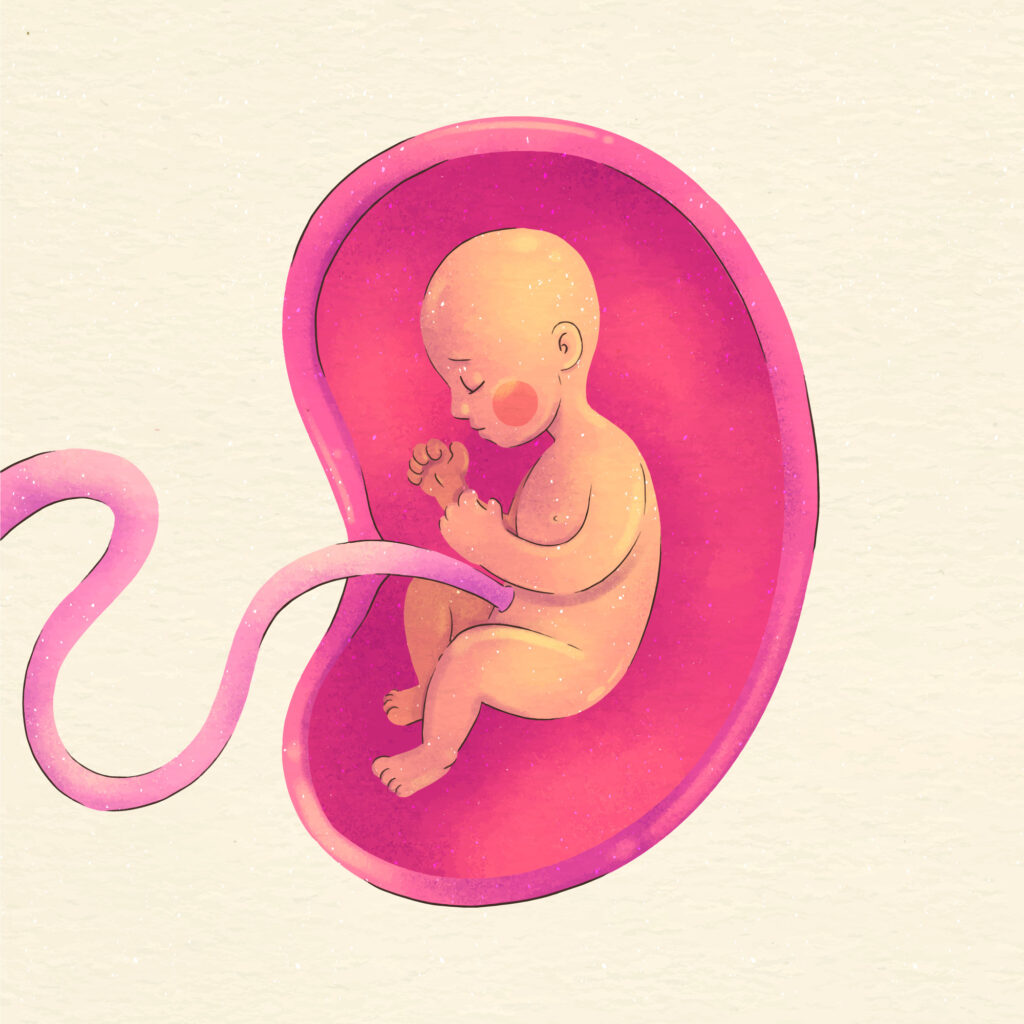Placenta previa is a condition during pregnancy in which the placenta inside the woman’s womb partially or completely blocks the uterus, where the uterus opens.
The placenta develops only during pregnancy and provides nutrients and oxygen to the growing fetus. Usually, the placenta begins to form either on the upper part of the uterus or the inner wall of the uterus.
Placenta previa occurs when the placenta develops in a way that some of its tissue blocks the uterus. During this complication in pregnancy, or before and after delivery, vaginal bleeding might occur.
Types of placenta previa
There are three types of placenta previa based on the position of the placenta relative to the cervix:
- Complete placenta previa: The placenta completely covers the uterus.
- Partial placenta previa: Part of the placenta covers the uterus.
- Marginal placenta previa: The edge of the placenta is close to the cervix but does not cover it completely.
The type of Complication determines the level of risk and management during pregnancy and delivery
Signs and symptoms
This type of complication can be detected after twenty weeks of pregnancy if bright red vaginal bleeding is observed. It may or may not be painful. Bleeding can be accompanied by pre-labor contractions inside the uterus that can cause pain.
Although the exact causes of these complications are unknown, if you experience vaginal bleeding during your third trimester, you should seek medical help to diagnose, manage, and treat the bleeding and other placenta previa symptoms to avoid any complications.
Who is at risk?
This is common in women who have had
- give birth earlier
- Previously gave birth to a baby by cesarean section
- Because of the surgery, they developed a scar on their uterus
- Placenta previa during a previous pregnancy
Women can also be affected if they:
- Pregnant after transplanting a fertilized egg through an assisted reproductive technology (ART) procedure;
- pregnant with two or more fetuses;
- Age above 35 years.
Women who smoke or use drugs may also be affected by placenta previa during their pregnancy.
Complications arising from placenta previa
If placenta previa is diagnosed, the patient can be monitored at Best Hospitals for Pregnancy in Hyderabad for signs of any related complications. This may include:
- Bleeding: Women with these complications may experience life-threatening bleeding and bleed during pregnancy or delivery. Bleeding may also occur for the first few hours immediately after delivery.
- Premature birth: Excessive bleeding can lead to emergency cesarean section delivery before the end of pregnancy.
- Placenta accreta spectrum: This is a condition in which a woman’s placenta develops through the uterine wall or at some point during pregnancy. This condition can lead to bleeding during the delivery process or pregnancy.
Diagnosis
Placenta previa can be diagnosed through diagnostic tests, with a routine ultrasound or one conducted during vaginal bleeding. For a more detailed examination, a trained gynecologist can perform a transvaginal ultrasound, offering a clearer insight into the issue.
Treatment of placenta previa
Upon diagnosing placenta previa, regular check-ups at the hospital become more frequent. This proactive approach ensures close monitoring and timely detection of any abnormal changes in the placental position.
Sometimes, women who develop this type of Complication in the early stages of pregnancy resolve the condition without intervention. As the uterus grows, the gap between the placenta and uterine opening may also increase.
If the condition resolves on its own, a normal vaginal delivery may be possible. However, if the problem persists, delivery via C-section is an option. The treatment is crucial in determining the appropriate mode of delivery to ensure the safety of both mother and baby.
Treatment if bleeding occurs
If there’s vaginal bleeding at 20 weeks of pregnancy, treat it as an emergency. Take the patient to the hospital for immediate care. Blood transfusion may be necessary to replace lost blood, and tests can assess the health of both the mother and the unborn child.
At 36 weeks pregnant, a C-section delivery may become necessary. In cases of severe blood loss or potential threats to the health of the patient or newborn, an emergency C-section is imperative before reaching full term.
Bleeding treatment may depend on the severity and duration of bleeding as well as the duration of pregnancy at that time.
Treatment without bleeding
If there is no actual bleeding, but an ultrasound reveals the possibility of the development of complications, the main goal of treatment may be to reduce the risk of possible bleeding episodes and make the day of delivery as smooth as possible.
In case of vaginal bleeding episodes, promptly reach out to the hospital as it constitutes a medical emergency.
Planned cesarean-section delivery
Planning for a cesarean section delivery can occur at or after 36 weeks of pregnancy, irrespective of any episodes of vaginal bleeding attributed to placenta previa.
Planning delivery before 37 weeks may involve healthcare providers prescribing medications. This aids in ensuring proper and timely development of the baby’s lungs for a smoother delivery process.
Causes of placenta previa
The exact cause of this type of complication remains unknown. However, certain factors such as your medical background and certain lifestyle habits can increase your chances of developing placenta previa.
Ultimately, we would say that this condition can be life-threatening and should be taken seriously.
Prevention of placenta previa
In some instances, avoiding smoking can prevent the underlying risks causing this complication. Bed rest, reducing or halting intercourse, and limiting strenuous activity can effectively minimize vaginal bleeding linked to this medical condition.

